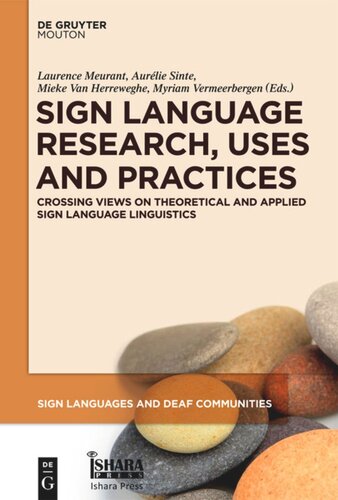

Most ebook files are in PDF format, so you can easily read them using various software such as Foxit Reader or directly on the Google Chrome browser.
Some ebook files are released by publishers in other formats such as .awz, .mobi, .epub, .fb2, etc. You may need to install specific software to read these formats on mobile/PC, such as Calibre.
Please read the tutorial at this link: https://ebookbell.com/faq
We offer FREE conversion to the popular formats you request; however, this may take some time. Therefore, right after payment, please email us, and we will try to provide the service as quickly as possible.
For some exceptional file formats or broken links (if any), please refrain from opening any disputes. Instead, email us first, and we will try to assist within a maximum of 6 hours.
EbookBell Team

4.7
86 reviewsThe uses and practices of sign languages are strongly related to scientific research on sign languages and vice versa. Conversely, sign linguistics cannot be separated from Deaf community practices, including practices in education and interpretation. Therefore, the current volume brings together work on sign language interpreting, the use of spoken and sign language with deaf children with cochlear implants and early language development in children exposed to both a spoken and sign language, and reports on recent research on aspects of sign language structure. It also includes papers addressing methodological issues in sign language research.
The book presents papers by "more seasoned" researchers and "new kids on the block", as well as papers in which the two collaborate. The contributions will be of interest to all those interested in linguistics, sociolinguistics, cultural studies, interpreting and education. It will have particular relevance to those interested in sign linguistics, sociolinguistics of deaf communities, Deaf studies, Deaf culture, sign language interpretation, sign language teaching, and (spoken/signed) bilingualism. Given the scarcity of literature on "Deaf studies", the book will also appeal widely beyond the traditional academic milieu. As a result, it has relevance for those teaching and learning sign languages, for professional and student interpreters and for teachers of the deaf.